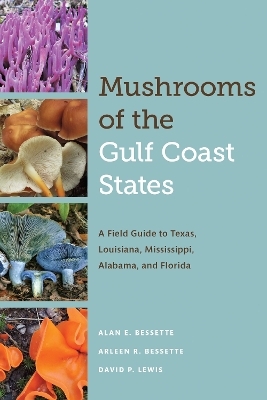
Mushrooms of the Gulf Coast States
University of Texas Press (Verlag)
978-1-4773-1815-7 (ISBN)
The weather patterns and topography of America's Gulf Coast create favorable growing conditions for thousands of species of mushrooms, but the complete region has generally gone uncharted when it comes to mycology. Mushrooms of the Gulf Coast States at last delivers an in-depth, high-quality, user-friendly field guide, featuring more than 1,000 common and lesser-known species—some of which are being illustrated in color for the first time.
Using easily identifiable characteristics and a color key, the authors enable anyone, whether amateur mushroom hunter or professional mycologist, to discern and learn about the numerous species of mushrooms encountered in Texas, Louisiana, Mississippi, Alabama, and Florida. Wild-food enthusiasts will appreciate the information on edibility or toxicity that accompanies each description, and they will also find the book’s detailed instructions for collecting, cleaning, testing, preserving, and cooking wild mushrooms to be of great interest. Providing encyclopedic knowledge in a handy format that fits in a backpack, Mushrooms of the Gulf Coast States is a must-have for any mushroom lover.
Alan E. Bessette is a distinguished emeritus professor of biology at Utica College of Syracuse University. A professional mycologist, he has authored or coauthored more than twenty-five books, including Edible Wild Mushrooms of North America. Arleen Bessette is a mycologist and botanical photographer, winning multiple awards in the North American Mycological Association’s photography competition. She has authored or coauthored eighteen books, including Mushrooms of the Southeastern United States. A retired chemist, David P. Lewis is currently a research associate with the Field Museum of Natural History in Chicago and has served as president of the Gulf States Mycological Society since 1998. In his mycological papers, Lewis has described many species new to science, several of which have been named for him.
Preface
Acknowledgments
Introduction
Geographic Area Covered by This Book
Why Collect and Study Wild Mushrooms?
Mushroom Structure and Function
Collecting and Documenting Wild Mushrooms
Making a Spore Print
Notes on the Descriptions of Illustrated Species
How to Use This Book
Mushroom Identification Procedure
Color Key to the Major Groups of Fungi
Species Descriptions and Illustrations
Bird’s Nest Fungi
Boletes
Carbon, Crust, Cushion, and Parchment Fungi
Chanterelles and Similar Fungi
Corals and Cauliflowers
Cordyceps, Tolypocladium, and Similar Fungi
Cup Fungi
Earth Tongues and Earth Clubs
Fiber Fans
Gilled Mushrooms
Hypomyces and Other Parasitic Fungi
Jelly Fungi
Morels, False Morels, and Similar Fungi
Polypores
Puffballs, Earthballs, Earthstars, and Similar Fungi
Stinkhorns
Tooth Fungi
Truffles and Other Hypogeous Fungi
Appendix A. Microscopic Examination of Fungi
Appendix B. Chemical Reagents and Mushroom Identification
Appendix C. Mushrooms for the Table
Glossary
References and Resources
A Note on the Authors
Photo Credits
Index to Common Names
Index to Scientific Names
| Erscheinungsdatum | 18.07.2019 |
|---|---|
| Zusatzinfo | 664 color photos, 1 b&w photo |
| Verlagsort | Austin, TX |
| Sprache | englisch |
| Maße | 152 x 229 mm |
| Gewicht | 1474 g |
| Themenwelt | Sachbuch/Ratgeber ► Natur / Technik ► Natur / Ökologie |
| Naturwissenschaften ► Biologie ► Mykologie | |
| ISBN-10 | 1-4773-1815-1 / 1477318151 |
| ISBN-13 | 978-1-4773-1815-7 / 9781477318157 |
| Zustand | Neuware |
| Haben Sie eine Frage zum Produkt? |
aus dem Bereich


